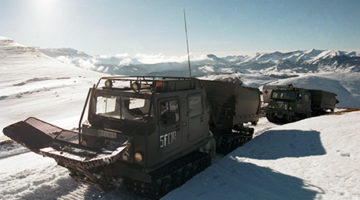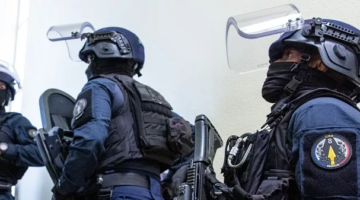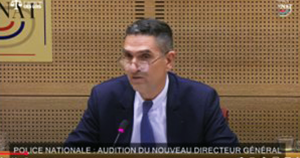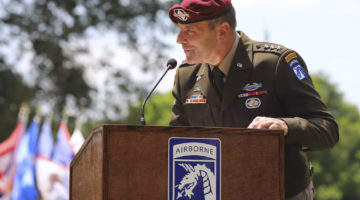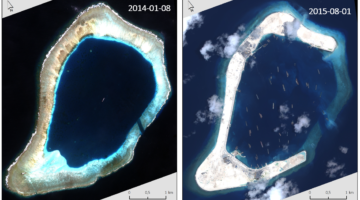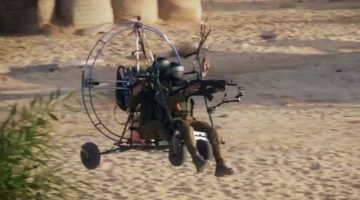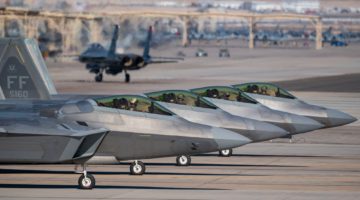From www.sldinfo.com – An Interview with the USAF Operational Leadership, Colonel Jeffrey Weed, the Commander of the 414th Combat Training Squadron
Most of us are familiar with the videos and photos generated by Red Flag Exercises. Many of us have seen the Red Flag film at the Air and Space Museum and find the combat flying and tactics shown in the film to be amazing. But in today’s world, those planes are simply the tip of the iceberg of a combat capability training to operate in an extended battlespace. Our main interlocutor for the discussion was Col. Jeffrey Weed, the Commander of the 414th Combat Training Squadron. As one can see from his biography, the diversity of his background permits him to bring a wide range of experience to his demanding job.
According to his biography:
The 414th’s mission is to develop, plan, execute, and direct Air Combat Command’s premier advanced combat training exercise, RED FLAG. RED FLAG is conducted over the Nevada Test and Training Range and annually trains over 350 multi-service and allied units. RED FLAG creates the largest, most realistic and relevant air combat training in the world. RED FLAG integrates live fly, space operations, and cyber effects in scenarios important to combatant commanders across the globe. RED FLAG is responsible for training over 27,000 personnel each year.
Colonel Weed was commissioned in 1987 as a distinguished graduate of the ROTC program at Carnegie Mellon University. He earned his wings at Columbus AFB, Miss., in 1989 and is a 1994 graduate of the Tactical Leadership Program and a 1996 graduate of the USAF Weapons School. Colonel Weed has served as the commander of the 422nd Test and Evaluation Squadron, Deputy Commander, 53rd Test and Evaluation Group, Nellis AFB, NV and Vice Commander, 56th Fighter Wing, Luke AFB, AZ. Prior to Nellis, he served as Deputy Director of Operations, Nuclear Deterrence, and Strategic Integration at Headquarters USAFE/AFAFRICA, Ramstein Air Base, Germany. In June 2013, Col Weed took command of the 414th Combat Training Squadron (RED FLAG), Nellis Air Force Base, Nevada.
The beginning of the first Red Flag Exercise this year was from Jan. 26 – Feb. 13, 2015.
According to a story on the Nellis Air Force website:
Red Flag is a realistic combat training exercise involving the air, space, and cyber forces of the United States and its allies. The exercise is hosted north of Las Vegas on the Nevada Test and Training Range — the U.S. Air Force’s premier military training area with more than 15,000 square miles of airspace and 2.9 million acres of land.
With 1,900 possible targets, realistic threat systems and an opposing enemy force that cannot be replicated anywhere else in the world, Nellis AFB and the NTTR are the home of a simulated battlefield, providing combat air forces with the ability to train to fight together in a peacetime environment, and to survive and win together.
The 414th Combat Training Squadron is responsible for executing Red Flag. The exercise is one out of a series of advanced training programs administered at Nellis AFB and on the NTTR by organizations assigned to the U.S. Air Force Warfare Center.
More than 125 aircraft are scheduled to depart Nellis twice a day and aircraft may remain in the air for up to five hours. Flying times are scheduled to accommodate other flying missions at Nellis AFB and provide Red Flag participants with valuable training in planning and executing a wide-variety of combat missions.
Col. Weed clearly laid out the strategic direction for the evolution of Red Flag exercises in the period ahead. With the need to train for a more difficult and more contested combat environments, training must adjust. Adjustments are necessary both to deal with evolving threats over great distances and to train for ways to more effectively integrate evolving blue systems as to operate in a contested environment. According to Col. Weed: “Although the airspace has not changed for the exercises — we still operate live fly on the NV Test and Training Range — we do use a MUCH larger geographic AOR for virtual and constructive participants.”
The challenge of synchronizing the various combat elements is increasingly complex; and the evolution of command and control to provide for synchronization in the expanded battlespace is a key requirement for enhancing the effectiveness of airpower. The new Air Combat Commander, General Carlisle has placed a significant priority on C2 innovations to enhance airpower coordination in a distributed battlespace. There is clear concern that training be fully funded to ensure that the Air Force and their joint and coalition partners can adapt to the kind of rapid changes which the forces are facing. The team at Nellis argued effectively for a 4th Red Flag during the year. They moved from the three flags conducted the last couple of years under the pressure of fiscal stringencies.
How do you set the agenda for the Red Flag exercises?
Each year the ACC holds a Combat Air Force (CAF) weapons and tactics conferences where the training gaps are identified and priorities for the year. What collective training needs to be pursued in the year ahead in the advanced training venue?
Red Flag is a unique environment within we can create the complex, multi-domain training venues, which allow us to address combat air force training shortfalls.
Obviously, you are focused upon C2 evolution to enable synchronization of the combat air force. How are you doing that?
We are definitely focused on that challenge. One way is to generate disruptions in the C2 system to find ways to deal with any threats along those lines. Another is to train to distributed operations, such as putting a Forward Operating Base (FOB) about 100 miles north of the base and where we connect rescue assets with the exercise force. (…)
—
>>> For the full article go to the following:
http://www.sldinfo.com/red-flag-nellis-going-forward-training-the-force-of-the-expanded-battlespace/

